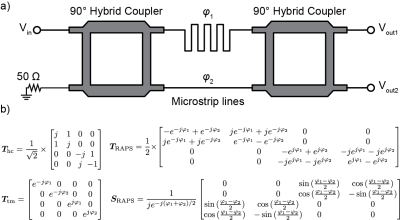Yue Zhu1,2, William A Grissom1,2,3,4, John C Gore1,2,3,4, and Xinqiang Yan1,2
1Vanderbilt University Institute of Imaging Science, Nashville, TN, United States, 2Department of Radiology and Radiological Sciences, Vanderbilt University, Nashville, TN, United States, 3Biomedical Engineering, Vanderbilt University, Nashville, TN, United States, 4Electrical and Computer Engineering, Vanderbilt University, Nashville, TN, United States
1Vanderbilt University Institute of Imaging Science, Nashville, TN, United States, 2Department of Radiology and Radiological Sciences, Vanderbilt University, Nashville, TN, United States, 3Biomedical Engineering, Vanderbilt University, Nashville, TN, United States, 4Electrical and Computer Engineering, Vanderbilt University, Nashville, TN, United States
A
low loss ratio adjustable power splitter (RAPS) was designed with a Wilkinson
Splitter. It has potential problems of challenging and laborious building process and safety hazard. In
this abstract, a new RAPS designed with hybrid couplers and printed microstrip lines mitigated the problems.

Figure 1. a) Diagram
of the power splitter model. The final ratio between Vout1 and Vout2 are
adjusted by varying the microstrip line. b) Transmission matrices for
the hybrid coupler (Thc), the transmission line (Ttm),
and the RAPS (TRAPS). The scattering matrix of RAPS (SRAPS)
is derived from TRAPS. We can see from the S-parameter matrix, for any ratio, HP-RAPS is a lossless circuit with all ports well matched and
output ports isolated. The output ratio has a tangent dependence on the length difference
between the two microstrip lines (S13/S14 = tan[(φ1
– φ2)/2]).

